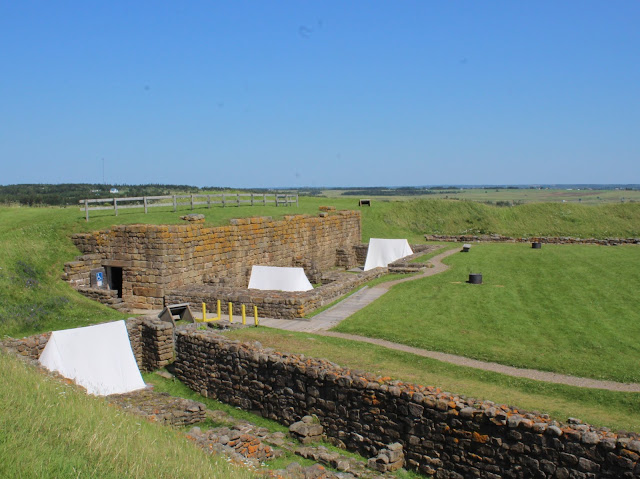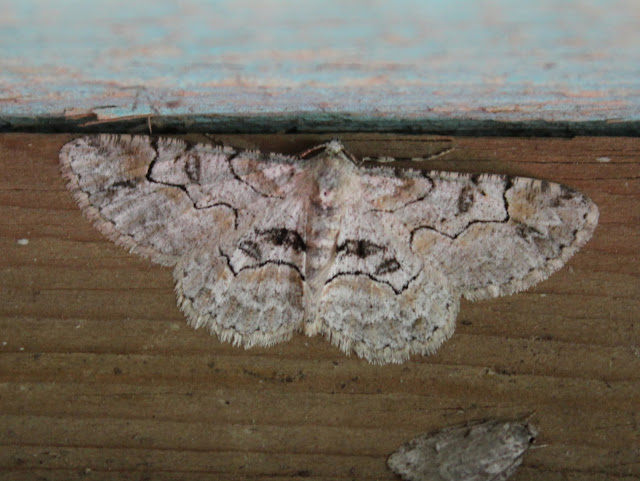It was very windy today, although it's pretty much always windy at the head of the Bay of Fundy, and you can see the tree in the far right of the picture below has grown on an angle as a result. It would have been more striking if I'd taken the picture from a different angle, but I think you can still see that the tree is growing on a slant.
There is an interpretive centre at the fort with lots of artifacts from the archaeological digs that have taken place over time. Although the fort was built by the French, it was captured by the British in 1755, and became a base for the deportation of the Acadians - a dark and dreadful time in the history of Atlantic Canada. At that time, it was known as Fort Cumberland. Later, in 1776, the British routed a rebel force from the US, retaining the area under British rule. It was eventually abandoned in 1835, and declared a national historic site in 1920.
Outdoors, there are a variety of different cannon and mortar examples.
The fort is star-shaped, but that's difficult to show in photographs taken at ground level, so here's a picture from an info-board at the site that shows the shape.
Many of the old foundations of the original buildings still exist, such as this foundation for the British men's barracks.
There were also several restored casemates (a vaulted chamber in a fortress), both stone and timber, where provisions were stored and in the event of emergencies, they could also be used as housing. This picture is a restored stone French casemate.
This stone casemate is from the British modifications to the fort.
This is a restored timber casemate built by the French.
There was a series of narrow windows, known as a curtain wall, providing views out over the marshland and the water, giving the fort's inhabitants a clear view of approaching troops.
As you can see from the following picture, the curtain wall looked out over the water and the marshland.
I like this shot showing the fort and its star-shaped protrusions with the modern windmills in the background. I'm glad we have green energy sources now.
The fort offers a camping experience for people who want to experience tents styled after those from the 1700s that could have been used in the vicinity. I think that would be kind of fun.
The fort has a lot of useful information panels as well as artistic renditions of activities that would have occurred at the fort. This adds to the experience by helping visitors imagine how life would have been at the time the fort was occupied.
We got some exercise scrambling up and down the hills, as Marc demonstrates!
All in all, it was an enjoyable visit on a very windy day, and we had fun exploring this piece of local and national history.





































